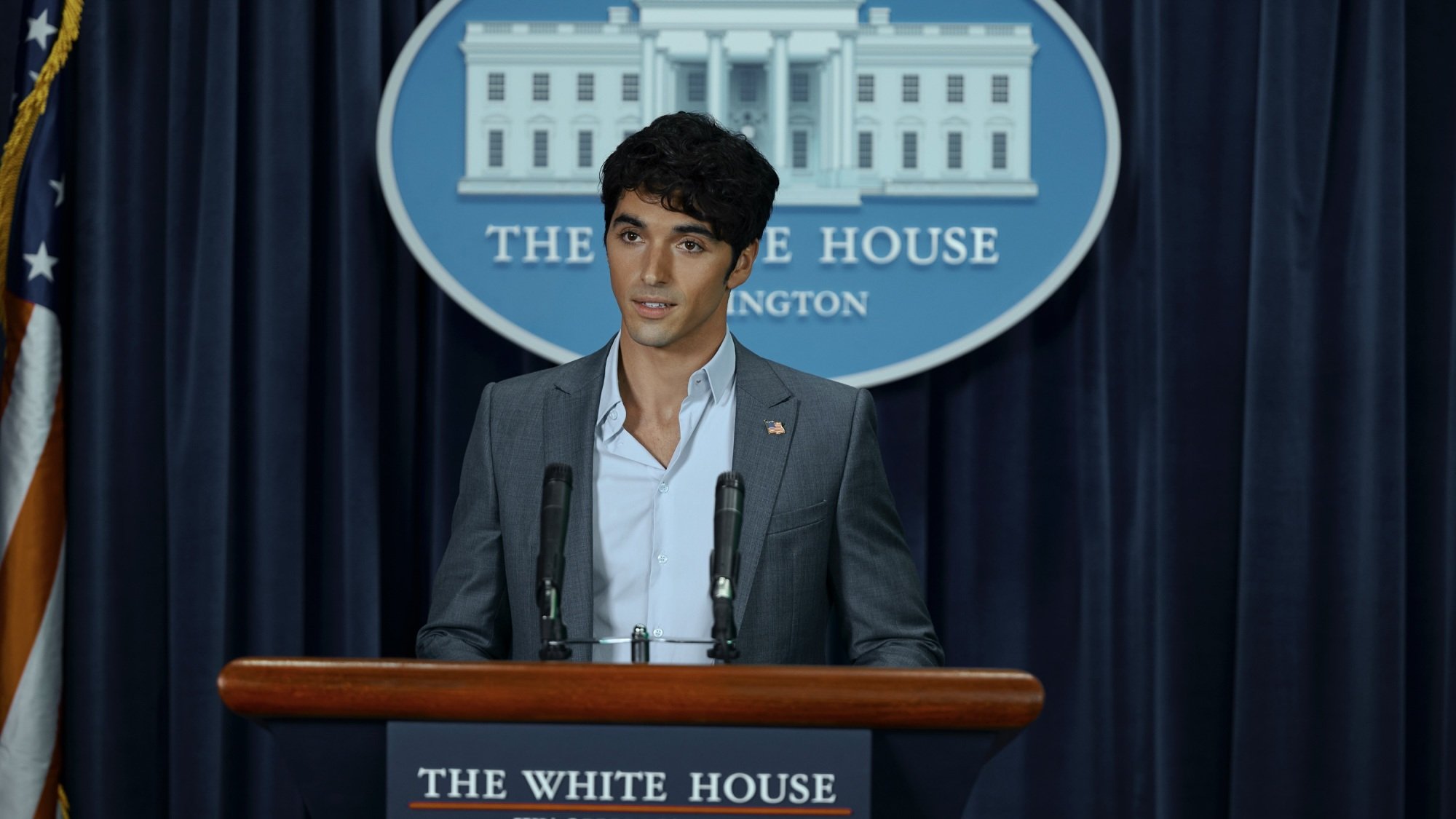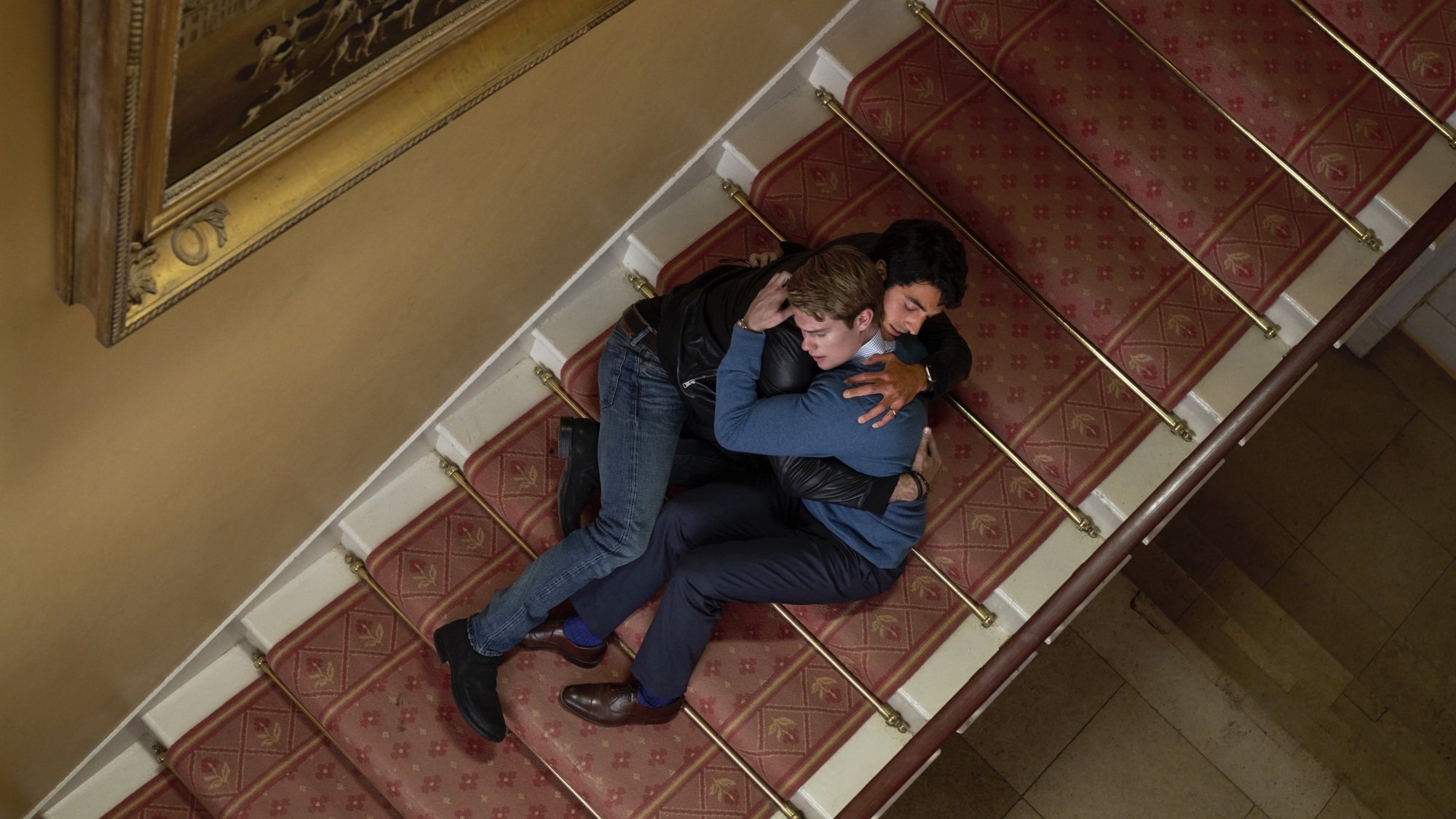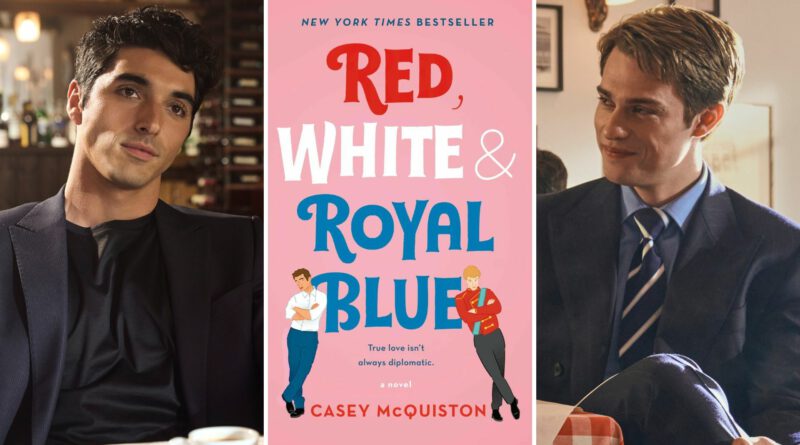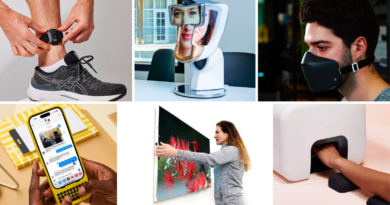5 ways ‘Red, White & Royal Blue’ is different from the book

Prime Video’s adaptation of Casey McQuiston’s Red, White & Royal Blue is as fluffy and sweet as the original novel, but that doesn’t mean there aren’t some major differences between the book and the film.
Directed by Matthew López, the movie still focuses on the relationship between Alex Claremont-Diaz (Taylor Zakhar Perez), First Son of the United States, and Prince Henry of Wales (Nicholas Galitzine). What begins as a contentious rivalry soon develops into an international romance, with both Alex and Henry struggling to maintain their public personas while keeping their love a secret.
As with any adaptation, Red, White & Royal Blue makes a few tweaks here and there. For example, instead of first meeting each other at the 2016 Olympics in Rio as they do in the book, the film versions of Alex and Henry first met at a climate conference in Melbourne. Both characters have also been aged up, as Henry is now fully in law school instead of undergrad.
However, these are relatively small changes. What’s most interesting here are Red, White & Royal Blue‘s biggest deviations from the book, like removing or adding entire characters. How do these shifts alter character dynamics and plot arcs? And, most importantly, do they work in the context of the film? Let’s dive in, and take a look at the five biggest changes between McQuiston’s novel and López’s film.
Has anyone seen June Claremont-Diaz?

Right off the bat, the film version of Red, White & Royal Blue is missing a major character: Alex’s big sister, June Claremont-Diaz. She, Alex, and the Vice President’s granddaughter Nora Holleran (Rachel Hilson) make up the high-powered “White House Trio.” More than that, though, June is a major supportive presence in Alex’s life. She encourages him to think beyond what their mother, President Ellen Claremont (Uma Thurman), asks of them, and she even pretends to date Henry when the media suspects Alex and Henry’s relationship.
In the movie, June has been cut completely, with Nora taking on some parts of her role — including her romance with Henry’s best friend Percy Okonjo (Malcolm Atobra). Notably, the film makes no mention of Nora and Henry’s in-book romantic history. The two dated before deciding to just be friends, but their comfort with each other leads to the two of them sharing a joking kiss on New Year’s Eve, right in front of a jealous Henry. (In the movie’s New Year’s Eve sequence, Alex gets kissed by two unnamed women.)
If you were coming into Red, White & Royal Blue without having read the book, you wouldn’t notice June’s absence at all: Nora fills in the role of best friend and confidant nicely. However, book fans will surely miss her quips and her tight-knit bond with Alex, as well as the dynamic of the entire White House Trio.
Red, White & Royal Blue features some very different family dynamics.

With the omission of June, it’s only natural that the Claremont-Diaz family dynamic changes a little. For starters, there’s less of the challenging push and pull between Ellen and June, who refuses to work on her mother’s reelection campaign so as not to jeopardize her journalistic ambitions. In the film, Ellen is completely focused on Alex but seemingly less willing to involve him in policy matters until she gets wind of his Texas Memo (a whole binder in the book, because Alex is nothing if not extra). Also, crucially, Ellen and Alex’s father Oscar Diaz (Clifton Collins Jr.) are not divorced in the movie, meaning that there’s no tension between the two, and one less stressor for Alex. Like with June’s removal, cutting the divorce (and Alex’s stepdad Leo) streamlines the story for the screen.
Shifting family dynamics are also at play in Red, White & Royal Blue‘s take on the Royals. Henry’s mother Catherine never appears, so we don’t get the scene where she basically blackmails Queen Mary into letting Henry go public with Alex. We also don’t get Queen Mary at all! She’s been replaced with a King (Stephen Fry), likely in an attempt to lessen any comparisons to Queen Elizabeth. (Don’t worry, the King plays the same role in the film as Mary does in the books.)
The character who suffers most in this transition is Princess Bea (Ellie Bamber). In McQuiston’s novel, we learn about Bea’s prior struggles with addiction — earning her the nickname “Powder Princess” — and her subsequent charity work. Like June, she proves a wonderful support system for her brother, standing up for him and encouraging his relationship. Unfortunately, in the movie, she feels more like a cardboard cutout of a generic supportive sister, with none of the grit of her book counterpart.
Red, White & Royal Blue gives us more of Henry’s perspective.

Red, White & Royal Blue is written from Alex’s point of view, but the movie takes the leap from page to screen as an opportunity to show us some key events from Henry’s perspective. For example, in the moments leading up to Alex and Henry’s meeting at the royal wedding, we hear Henry tell Bea how irritating he finds Alex — a conversation paralleled by Alex’s own complaints to Nora. Henry even criticizes the inordinate wedding expenses, such as a $ 75,000 cake (a fact June originally pointed out in the novel). These moments, which are not in the novel, allow us to see past the facade of Prince Henry before Alex does, giving us a better idea of his true character right off the bat.
The biggest use of Henry’s perspective comes when his and Alex’s private email correspondences leak. Instead of learning about the leak from Alex’s point of view, as we do with everything in the book, the movie shows us Henry’s reaction first. It’s a solid change that hammers in Henry’s devastation as he realizes that what little privacy he thought he had as Prince has been entirely shattered.
Rafael Luna is nowhere to be found.

Joining June in the cut character club is Rafael Luna, an openly gay Latino senator from Colorado who Alex views as a role model. Rafael plays a pivotal role in the book’s version of the 2020 election, supporting Republican Senator Jeffrey Richards’ bid for President. It’s a major betrayal for the whole Claremont-Diaz family, disillusioning Alex in the process.
Of all the adaptation changes Red, White & Royal Blue makes, the removal of Rafael hurts it the most. Alex loses a mentor figure, and we lose the story of his friendship with an older queer man, who has been through a fair share of difficulties himself. (Like being sexually harassed and then blackmailed by Richards, who is barely in the movie anyway, and far less Trumpian.) The film does try to replace Rafael with a new character, Miguel (Polo Morín), but the change is messy and ends up dulling the climax.
Miguel changes Red, White & Royal Blue‘s entire third act.

A character created entirely for the film, Miguel is a political journalist and former partner of Alex. Think of him as a mash-up of Rafael and Liam, Alex’s friend from high school who he used to hook up with. In the film, it’s Miguel who’s responsible for leaking Alex and Henry’s emails — whereas in the books, Rafael learns that the Richards campaign orchestrated the hack. He then leaks it to the press, a move that sows disfavor for Richards and helps Ellen win reelection.
However, in the movie, Miguel faces no consequences, nor does he get any Rafael-esque redemption arc. Instead, he’s just a sinister journalist looking for a scoop at any cost, while Richards remains a background player who doesn’t end up making much impact.
That’s where Rafael’s absence and Miguel’s addition work the least. In the book, learning that Richards was behind the leak is a terrifying moment, one that solidifies the hack as an insidious attempt to out two men — neither of whom is running for office — and use the following scandal to win an election. What reads as an indictment of governmental abuses of power in the novel becomes an indictment of an annoying journalist in the film — a strangely anti-media turn made even stranger by cutting the book’s aspiring journalist, June.
If anything, Miguel’s involvement in and motivations for the leak also diminish the final messaging of Red, White & Royal Blue. This is a film that is political by nature given the positions of its two leads. Yet in removing clear political motivation from the leak and pinning it on a petty ex, it fails to make as impactful of a statement as it could have.

